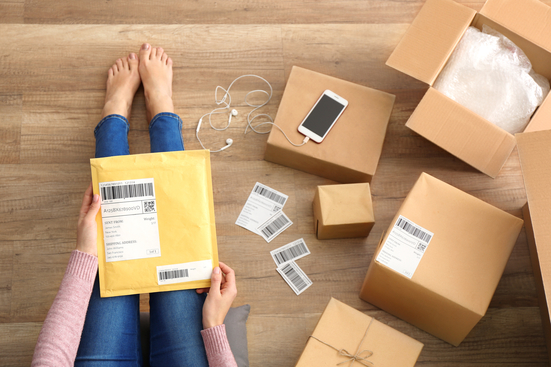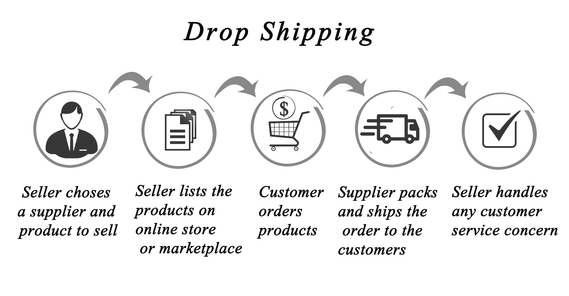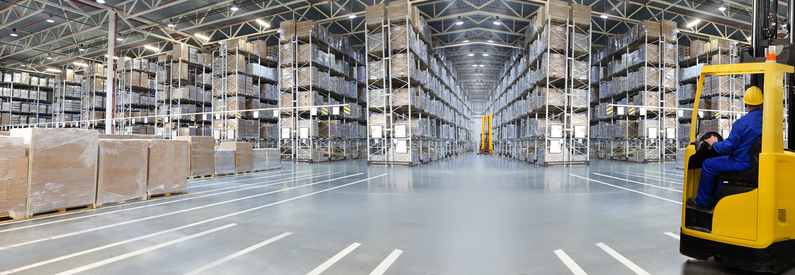Starting a new business and making sales can be incredibly exciting. It can also be filled with choices you never considered before, though. While you may have given a lot of time and work in marketing, developing a product and creating a website and social media presence, how you handle your order fulfillment is just as important.
You have several options when it comes to ecommerce fulfillment and each has strengths and weakness. What choice works best for you also depends on the size, budget and priorities of your business.
The details of running an online business can be overwhelming for many new owners. Although they may have concentrated more on developing products and sales to grow their business, many have found that there are logistical problems with filling and shipping product as they continue to expand and grow. It takes a regular assessment of your growth and needs to make sure that you are using the best fulfillment options for you.
Fulfillment options include:
- DIY, self-fulfillment
- Dropshipping
- Third party fulfillment center
Once businesses grow past being able to fill orders themselves, many owners do not know what to look for in a fulfillment center. However, choosing poorly can be detrimental to your customer experience and brand. This article will also include the important factors you need to decide which logistics provider works best for you and your company.
Deciding how to run your ecommerce fulfillment does not have to be overwhelming or confusing. With a little information and know-how, you can create a more profitable business with the right fulfillment option.
Ecommerce Order Fulfillment Options
As your online business continues to grow, your fulfillment needs will change as well. Each option has pros and cons, so it is important to assess what stage your company is at and take a close look at your options before making a decision. There are three options that your business can utilize for your fulfillment needs.
Do It Yourself (DIY)
Typically, most ecommerce fulfillment starts right in the home. Fulfilling orders yourself is the cheapest way to get your product to your customers. Many new businesses want to get an edge on the market and keep their prices down and handling all shipping themselves allows them to do so. This is usually the best option for new businesses because there are not too many packages to handle.

The second reason some small businesses choose self-fulfillment is that it gives them the opportunity to oversee all of their orders personally. Customers hold businesses owners directly responsible for the state that their package arrives in, so many owners want to make sure that every last detail is perfect. They want to control the perfect angles and minimal taping of their packaging.
As business starts to expand, the next step that many take is automating much of their DIY process. Many businesses start printing out labels instead of handwriting them and using software that helps automate some of the process.
Although initially handling your ecommerce order fulfillment process can exciting for your new businesses, the process can start to get in the way of expansion. The first real weakness is that it can be a tedious process. The process of folding, stuffing, sticking and taping can start to drain a lot of the initial enthusiasm that many new business owners need to create a thriving business.
Houses are also extremely limited in the amount of packaging they can take as well. Although a spare room or garage might initially be enough to hold the product, boxes and bubble wrap, they will quickly start to spill over as business starts to grow. There is only so much room for packaging and it can get out of control in your personal space.
Fulfillment can also take a significant amount of time that can be used elsewhere. Although initially, businesses can automate some of the processes in order fulfillment, a thriving business will quickly expand beyond a streamlined process. Small businesses have only so much time, and it can better be used for marketing, sales and customer service. It can become out of control when you are also trying to accomplish time-consuming fulfillment and important tasks can fall through the cracks.
Dropshipping
Another option that some business owners use is dropshipping. Dropshipping is a fulfillment method that does not require you to keep items directly in stock. Instead, the business owner buys the product directly from a third party for each order. Typically a wholesaler or manufacturer, the third party will then ship the product directly to the customer. What makes dropshipping different from other online retailers is they do not own the inventory.

Dropshipping has the advantage of relatively low overhead cost. Because the owner only pays for the product once it has been purchased, the merchant does not need to worry about unused merchandise. It is also easier to scale because the third party handles the fulfillment process. The merchant only has to worry about putting the order into the third party. If they get three times the orders, they do not have to put three times the work.
Dropshipping also allows businesses to carry a wide range of products. Businesses owners can engage various wholesalers and manufacturers to curate the items that they want. Because they do not have to purchase any of the items before selling them, they do not have to limit what they offer.
Dropshipping does have drawbacks, however. Because the third party does the bulk of the work and risk in processing orders, they take a much larger cut than a typical 3PL. A dropshipping model will cut significantly into your profit as an online business.
Engaging various third parties does make the shipping process more complex. When customers buy three separate products from you they expect that it will all be coming from the same place, but it may, in fact, be all coming from separate locations. It would probably not be in your best interest to charge three separate shipping charges for the order, so it would make it difficult to pass these charges along to the customer.
Dropshipping also opens you up to supplier error and customer frustration. There are bound to be mistakes from time to time with even the best supplier. You must be prepared to take responsibility for any supplier mistakes and be prepared to make it right. Your business could be hurt significantly if you engage a poor quality third party that makes too many mistakes.
Additionally, it will also be more difficult to determine which items are in and out of stock. Because you do not hold the product directly, you may find out too late that the product your customer ordered is out of stock.
Dropshipping has the advantages of low up-front cost and logistically potentially easier, but it does often bring a customer service headache and lower profit.
This why merchants often choose a 3PL instead once their sales have reached a certain number.
Third Party Logistics (3PL)

Once businesses find that their growth is actually inhibiting their success, many turn to outsourcing the work to a warehouse. Many find that engaging an ecommerce fulfillment center allows them to continue growing their business without the headache of processing their own orders.
A 3PL also has the advantage of lower shipping rates. Because they can ship higher volumes of product than your one business, they are able to get special discounts that your business would not be able to get on its own.
This savings is often a surprise for new business owners and can mean more business. Shipping cost is a larger issue than many online businesses realize. It can be a strong deterrent for customers that are in the very process of buying your product. In fact, of customers surveyed who ended up abandoning their cart, 59% said they chose not to buy because of “unexpected costs”. Businesses, such as Amazon, that offer free shipping have created a certain expectation among customers. Even if your product is priced right, if your shipping rate is too high you are missing out on valuable business.
A 3PL, then, can help you with providing the lowest shipping possible without eating into your profit. Not only does it lower prices, but a fulfillment center also allows you to get the fastest shipping possible. Again, customers have come to expect fast shipping as online businesses compete with each other to get their product to customers.
The advantage of a 3PL is that you can choose a warehouse that is near to your customers to reduce shipping times. In the DIY model, you are chained to your house so that there is no guarantee that you can get your product in the fastest amount of time possible.
Fulfillment centers also offer the advantage of scaling your business for you. Most businesses find that there are peaks and valleys in business. Holidays seasons are typically a busy time, for example, while January is typically a slow season for retail. However, sometimes order volumes can fluctuate in an unpredictable manner and it can be difficult to prepare for that from your home.
A sudden influx of orders when you are not expecting them can leave you scrambling to keep up, while a slow season leaves you drowning in product. 3PL businesses have much more room and the ability to quickly scale up the laborers and product needed so that you do not feel the logistical strain of too much or too little business.

The price of using 3PL, though, can initially surprise merchants if they are used to the DIY model. Outsourcing is not cheap, but the ability to sell more product easily, and not miss out on potential business because you are too busy fulfilling your own orders helps take the sting out of the cost. It is no wonder, then, that 71% if 3PL users found that using a 3PL reduced overall logistics costs.
A potential downside of using 3PL is the liability that you can possibly incur. How the product and shipment is handled, the care taken into packaging and the speed that it goes out is no longer in your hands. The customer will look to you, not to a warehouse, if a package takes too long or arrives in poor condition.
Do your homework when it comes to using a 3PL, then. It can be a hassle if you find out too late that the company you use does not work up to your standard. Ask questions beforehand to make sure that you use the right warehouse. We will discuss what to look for in the following section.
How to Pick the Best Ecommerce Fulfillment Companies

As stated above, customers hold you accountable for your product. Even if you hire a third party, they look to you if anything goes wrong. It is essential that you use the top ecommerce fulfillment companies that will job easier, not increase your customer service load. However, many merchants do not know what to look for when searching for an ecommerce fulfillment center. Here are some things to consider to help you find the best 3PL for you.
Scalability
A 3PL is a long-term relationship. It is important to find ones that not only works for you now, but will be able to handle an increase in workload as your business continues to expand. Flexibility and scalability should be the hallmarks of any 3PL that is worth your business. They should be willing to work closely with you so that they can understand your plans and goals for your business. This way they can plan to grow along with you.
Not only do they need to facilitate your growth in the long term, but they should be able to handle the busy and slow times in your business. They should be able to quickly add to their team to continue delivering speed and excellent service no matter how many orders need to go out. The right ecommerce fulfillment companies should anticipate most busy times, such as holidays, but also be able to quickly adjust should an unexpected one show up.
Technology
The 3PL business requires handling many clients, products and customer requests. In order to juggle all of these in a timely matter and personalize their service to your specific business, they must stay abreast on the latest technology available. Before switching to any 3PL, you need to make sure that their IT strategy and roadmap match your own.
One way to make sure that the 3PL is keeping up on technology is by checking how much technology they are investing into each year as a percent of their net revenues. See how much of their budget is going into innovative technology, not just maintaining their legacy system. If the 3PL is not continuously investing in new technology, they will quickly become out of date and you will be left with a less than an ideal provider.
Disaster Preparedness
Every time that your supply chain is disrupted means a significant loss in your sales. Considering that last year saw record-breaking losses from natural disasters, there is no reason that a business should not have a plan should disaster strike. You need to make sure that your potential 3PL can get back up and running as quickly as possible.
Ask about their disaster preparedness plan. Find out what they have planned for technology outages, natural disasters, labor shortage, etc. The more details they can provide you means you have fewer worries about interruptions to your business.
Knowledgeable Staff
Get a sense for the overall expertise of the staff within the organization. This ensures the future of their warehouse and that nothing will be dropped should management need to be replaced at any point. Knowledgeable staff also contributes significantly to a warehouse that runs smoothly. How much they understand will have an incredible impact on business.
Ask about their employee training. Do they invest in developing talent within their employees? Also, ask if they have a succession planning process should they need to make a change within management. This will help to ensure a smooth transition and inhibit any mistakes that it may cost you.
Financial Strength
3PLs are a capital-intensive business. A 3PL that lacks financial stability will be overly focused on their own business instead of looking after yours. They will be more likely to cut corners to help save their company, which can hamper your business. A 3PL that looks after their own wellbeing can possibly try to get by on a leaner staff, less likely to invest in innovative technology and won’t be able to weather disruptions as well.
Look into the profit and loss data for the past 3 years. This will allow you to see any trends that will help you make your decision. Make sure that the 3PL has good relationships with banks and quality leadership.
Ecommerce Fulfillment Options for the Growing Business
Although initially advantageous, DIY fulfillment is not sustainable over the long-term in a growing business. Dropshipping has the advantage of low-startup costs and scalability, but the very model means that the online business will receive much less profit than a traditional online store.
By outsourcing your shipping to a fulfillment center, you can maintain your profits, free your time for other important aspects of your business and create a scalable business. However, you are at the mercy of the fulfillment center to get your customers’ orders right. It is essential, then, that you ask questions, check on their history and take a look into their company before engaging their services.
If you are looking for a faster and more efficient way to improve the shipping process for your online business, engage with an ecommerce fulfillment center today!